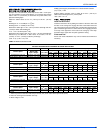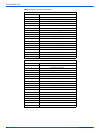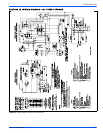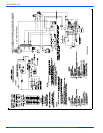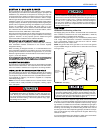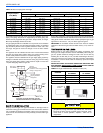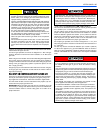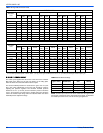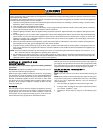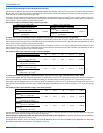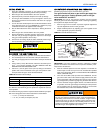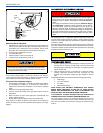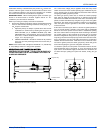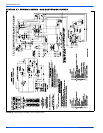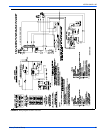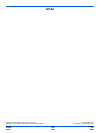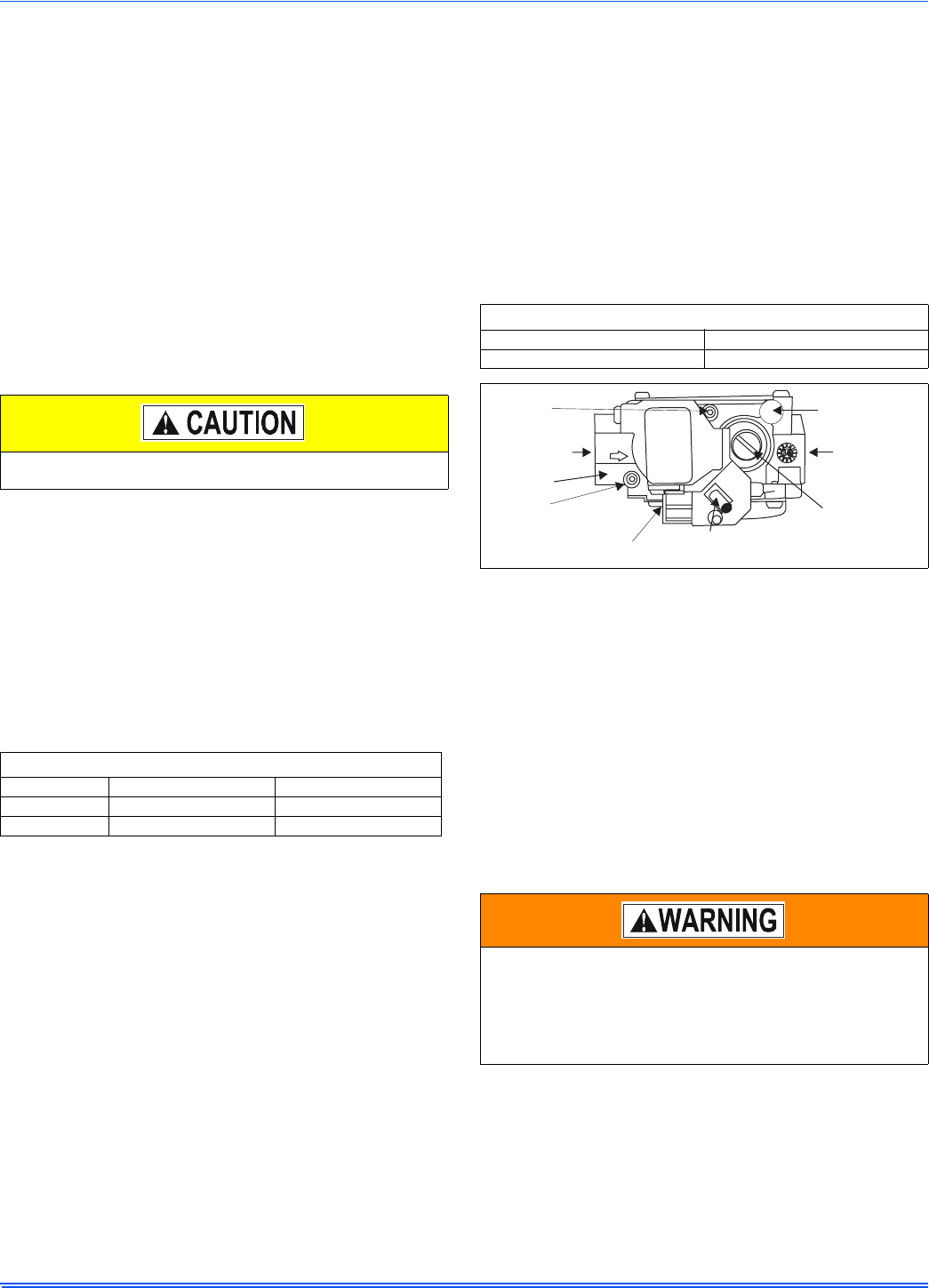
107272-UIM-B-1105
Unitary Products Group 35
INITIAL START UP
1. Read the applicable sequence of gas control operation in the
Operation and Troubleshooting section before proceeding.
2. Move the gas valve control switch to the “OFF” position.
3. Adjust the primary air. Set the damper to the start up settings.
4. On new gas line installations, air may be trapped in the line, the
burner may experience several lockouts until all the air is purged
from the lines.
5. Turn on the main electrical power and set the thermostat to call for
heat. Allow the burner to run a MINIMUM of 5 minutes to purge
combustion chamber and appliance heat exchanger.
6. Set the thermostat below room temperature, shutting the burner
“OFF”.
7. Move the gas valve control switch to the “ON” position.
8. Set the thermostat or operating control to call for heat. The burner
will start and go through the applicable sequence of burner/pri-
mary gas control operation, refer to step 1.
9. Once burner is running, adjust the orifice manifold pressure regu-
lator as described in Pressure Regulator Adjustment.
CHECKING THE GAS PRESSURES
1. The pressure ports on the gas valve are marked OUT and INLET.
2. The manifold pressure must be taken at the port marked OUT.
3. The inlet gas supply pressure must be taken at the port marked IN
LET.
4. Using a 3/32” (0.2 cm) Allen wrench, loosen the set screw by turn-
ing it 1 turn counter clockwise. DO NOT REMOVE THE SET
SCREW FROM THE PRESSURE PORT.
5. Use the 4” (10.2 cm) piece of 3/8” (0.9 cm) tubing to connect the
positive side of the manometer to the gas valve pressure refer-
ence port. Refer to Figure 43 for connection details.
IMPORTANT: The inlet gas pressure operating range table specifies
the minimum and maximum gas line pressures required for safe fur-
nace operation.
The minimum inlet gas pressure required to obtain the BTU input speci-
fied on the rating plate and in these instructions is shown below:
• 7.0” w.c. (1.74 kPa) for Natural Gas
• 11.0” w.c. (2.74 kPa) for Propane (LP) Gas
ADJUSTMENT OF MANIFOLD GAS PRESSURE
Manifold gas pressure may be measured at the gas valve.
Turn gas off at the ball valve or gas cock on gas supply line
before the gas valve. Find the pressure ports on the gas
valve marked OUT and INLET.
IMPORTANT: The cap for the pressure regulator must be removed
entirely to gain access to the adjustment screw. Loosening or tightening
the cap does not adjust the flow of gas.
1. Refer to Figure 42 for location of pressure regulator adjustment
cap and adjustment screw on main gas valve.
2. Adjust manifold pressure by adjusting gas valve regulator screw
for the appropriate gas per the following:
IMPORTANT: If gas valve regulator is turned in (clockwise), manifold
pressure is increased. If screw is turned out (counter clockwise), mani-
fold pressure will decrease.
3. After the manifold pressure has been adjusted, re-calculate the
furnace input to make sure you have not exceeded the specified
input on the rating plate. Refer to “CALCULATING THE FURNACE
INPUT (NATURAL GAS)”.
4. Once the correct BTU (kW) input has been established, turn the
gas valve to OFF and turn the electrical supply switch to OFF; then
remove the flexible tubing and fittings from the gas valve pressure
tap and tighten the pressure tap plug using the 3/32” Allen wrench.
5. Turn the electrical and gas supplies back on, and with the burners
in operation, check for gas leakage around the gas valve pressure
port for leakage using an approved gas detector, a non-corrosive
leak detection fluid, or other leak detection methods.
Be sure to relight any gas appliances that were turned off at the
start of this input check.
TABLE 20:
Inlet Gas Pressure Range
INLET GAS PRESSURE RANGE
Natural Gas Propane (LP)
Minimum 4.5” W.C. (1.12 kPa) 8.0” W.C. (1.99 kPa)
Maximum 10.5” W.C. (2.61 kPa) 13.0” (3.24 kPa) W.C.
TABLE 21:
Nominal Manifold Pressure
NOMINAL MANIFOLD PRESSURE
Natural Gas 3.5" w.c. (0.87 kPa)
Propane (LP) Gas 3.5" w.c. (0.87 kPa)
FIGURE 42: Gas Valve
The manifold pressure must be checked with the screw-off cap for
the gas valve pressure regulator in place. If not, the manifold pres-
sure setting could result in an over-fire condition. A high manifold
pressure will cause an over-fire condition, which could cause pre-
mature heat exchanger failure. If the manifold pressure is too low,
sooting and eventual clogging of the heat exchanger could occur.
Be sure that gas valve regulator cap is in place.
Inlet
Wrench
Boss
Inlet
Pressure Port
ON
OFF
On/Off Switch
(Shown in ON position)
Main Regulator
Adjustment
Outlet
Outlet
Pressure Port
Vent Port
1/4” Quick Connect
Electrical Terminals



